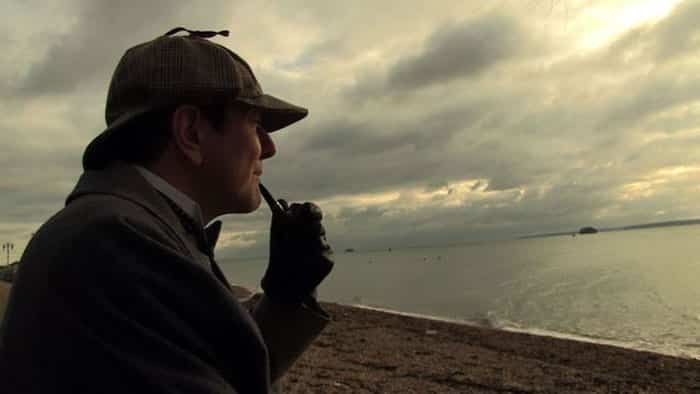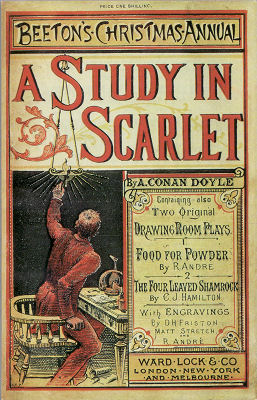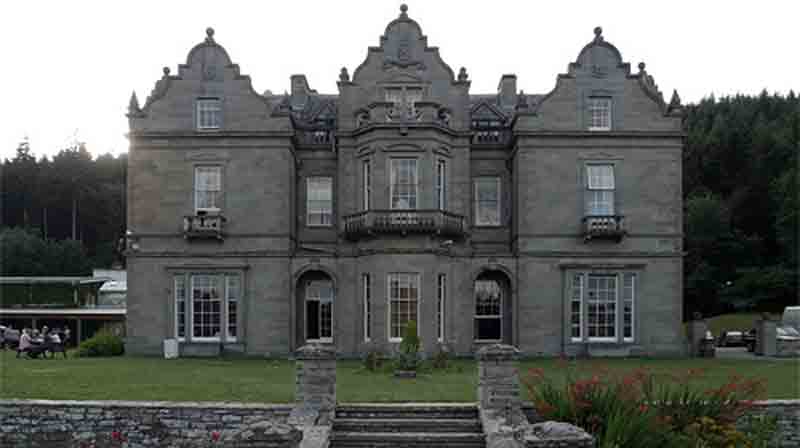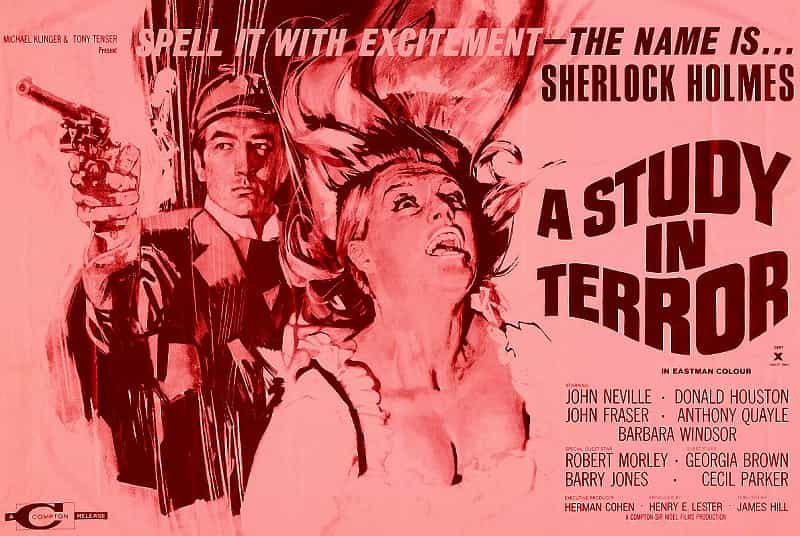Portsmouth author MATT WINGETT tells us how a small seaside town influenced Sir Arthur Conan Doyle, his belief in spiritualism and his greatest creation – Sherlock Holmes

Christmas 2012 marks the 125th anniversary of publication of the very first Sherlock Holmes story “A Study In Scarlet” in Beeton’s Christmas Annual, 1887. Conan Doyle was living in the seaside resort of Southsea at the time he invented Sherlock Holmes. It’s also the place where he developed a profound belief in the paranormal.
It all started in 1883 when Arthur Conan Doyle met Major General Arthur Wilkes Drayson of the Royal Artillery, an eccentric Southsea resident.
Alongside a book entitled The Art of Practical Whist and dozens of articles in The Boy’s Own Paper, Drayson had published several astronomical works, one of which propounded the theory of a “second rotation” to the earth, which Drayson argued, accounted for the Earth’s Glacial Periods.
Conan Doyle considered Drayson a genius, so when he invited Doyle to a table turning seance, he couldn’t resist. He was not impressed, however. As he wrote later:
“They sat around a dining-room table which after a time, their hands being upon it, began to sway and finally got sufficient motion to tap with one leg. They then asked questions and received answers, more or less wise and more or less to the point. They were got by the tedious process of reciting the alphabet and writing down the letter which the tap indicated. It seemed to me that we were collectively pushing the table and that our own wills were concerned in bringing down the leg at the right moment.”
Nevertheless, Conan Doyle’s curiosity was awake, and he began a series of paranormal experiments with Southsea architect Henry Ball. Conan Doyle had a theory that the mind was able to produce a kind of “secretion of thought” that a sensitive person could detect. This he thought, would explain telepathy.
After employing “a scientific method” to see whether thoughts could be transferred between their two minds, Doyle’s conclusion was clear: “Again and again,” Doyle recalls, “sitting behind [Ball], I have drawn diagrams, and he in turn has made approximately the same figure. I showed beyond doubt that I could convey my thought without words.”
Then, in 1887, his spiritual leaning was solidified by a singular event that occurred in Southsea. At the end of June of that year, he was introduced to an elderly gentleman who was reputed to have considerable mediumistic power. He later wrote about the incident to the spiritualist magazine “Light”.
“…for some days I had been debating in my mind whether I should get a copy of Leigh Hunt’s Comic Dramatists of the Restoration… I had thought the matter over, but had dismissed it from my mind a day or two before the seance. On sitting, our medium came quickly under control and delivered a trance address containing much interesting and elevating matter. He then became clairvoyant, describing one or two scenes which we had no opportunity of testing. So far, the meeting had been very interesting, but not above the possibility of deception. We then proposed writing. The medium took up a pencil and after a few convulsive movements he wrote a message to each of us. Mine ran: ‘This gentleman is a healer. Tell him from me not to read Leigh Hunt’s book.’ Now, sir, I can swear that no one knew I had contemplated reading that book, and moreover, it was no case of thought-reading, for I had never referred to the matter all day. I can only say that if I had had to devise a test message I could not have hit upon one which was so absolutely inexplicable on any hypothesis except that held by Spiritualists.”
Doyle believed that something entered his memory and probed it. In his eyes, this was incontrovertible proof of something above and beyond simple telepathy.
Doyle thus began to attend more seances. When he was disappointed by apparently wrong and misleading replies from spirits, up popped Drayson to set him straight. Drayson argued that some spirits are mischievous and deliberately misleading, so they would no doubt give him wrong information. One might be tempted to observe that it’s a rather convenient fallback position!
By the time he left Southsea in 1890, Arthur Conan Doyle was a firm spiritualist – something that the later death of his wife and son only served to strengthen.
It is fascinating to think that both the arch-rationalist Sherlock Holmes and Dolye’s firm conviction in a world of spirit were born in the south coast seaside resort of Southsea. Perhaps there’s something in the sea air…
Check out MATT WINGETT’s blog LIFE IS AMAZING. You can buy his books here. Matt’s previous articles for Spooky Isles can be seen here








